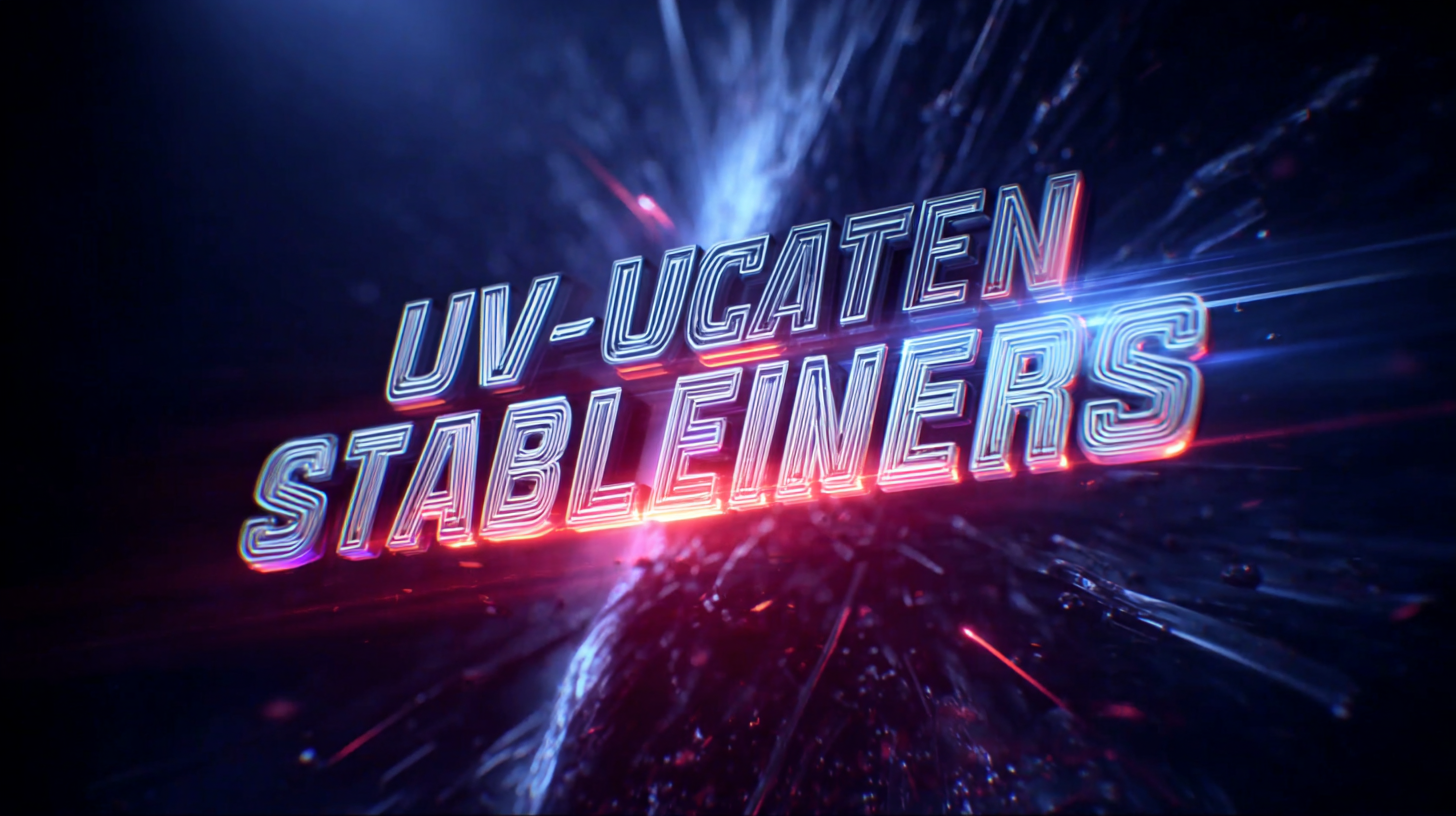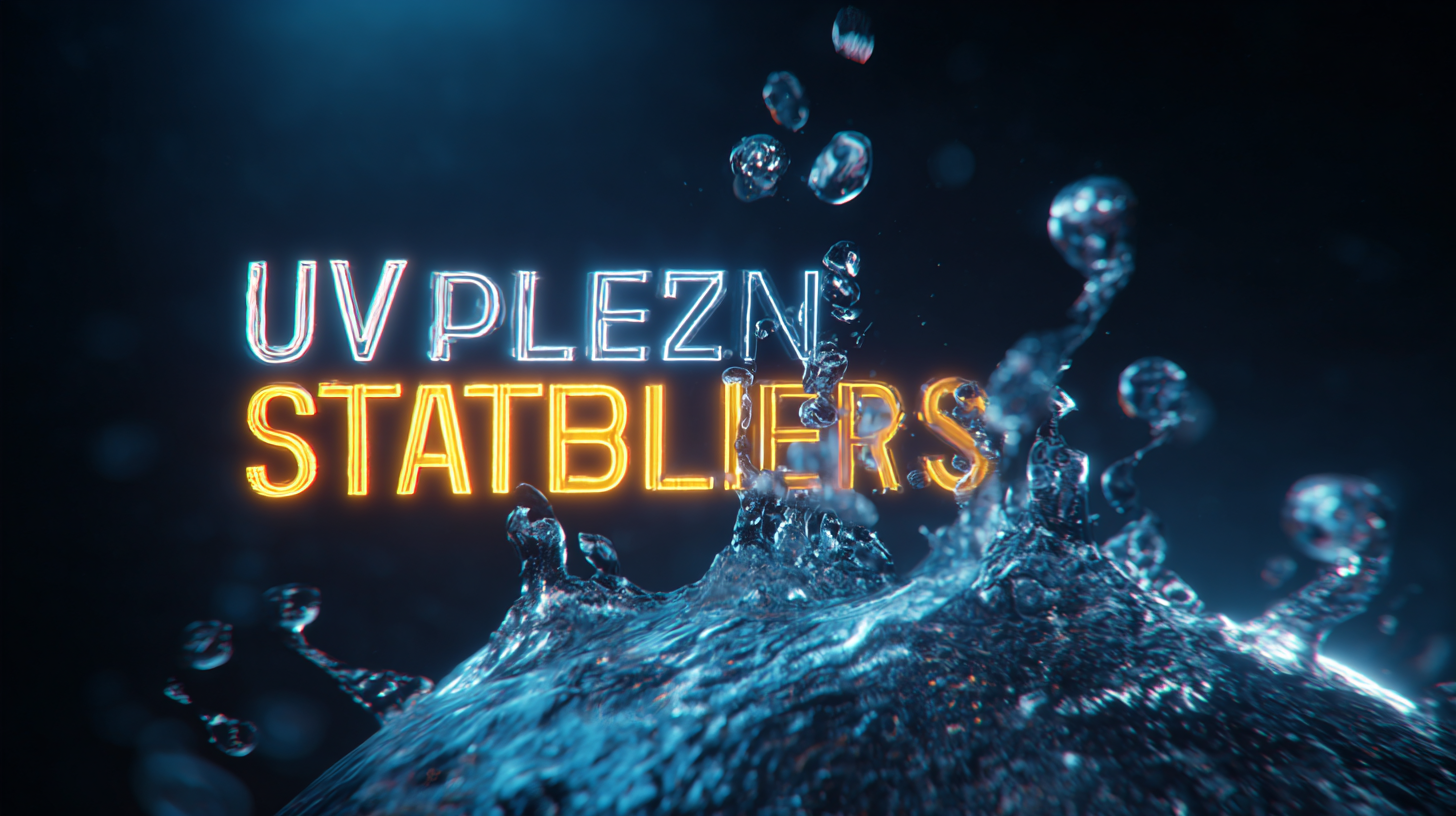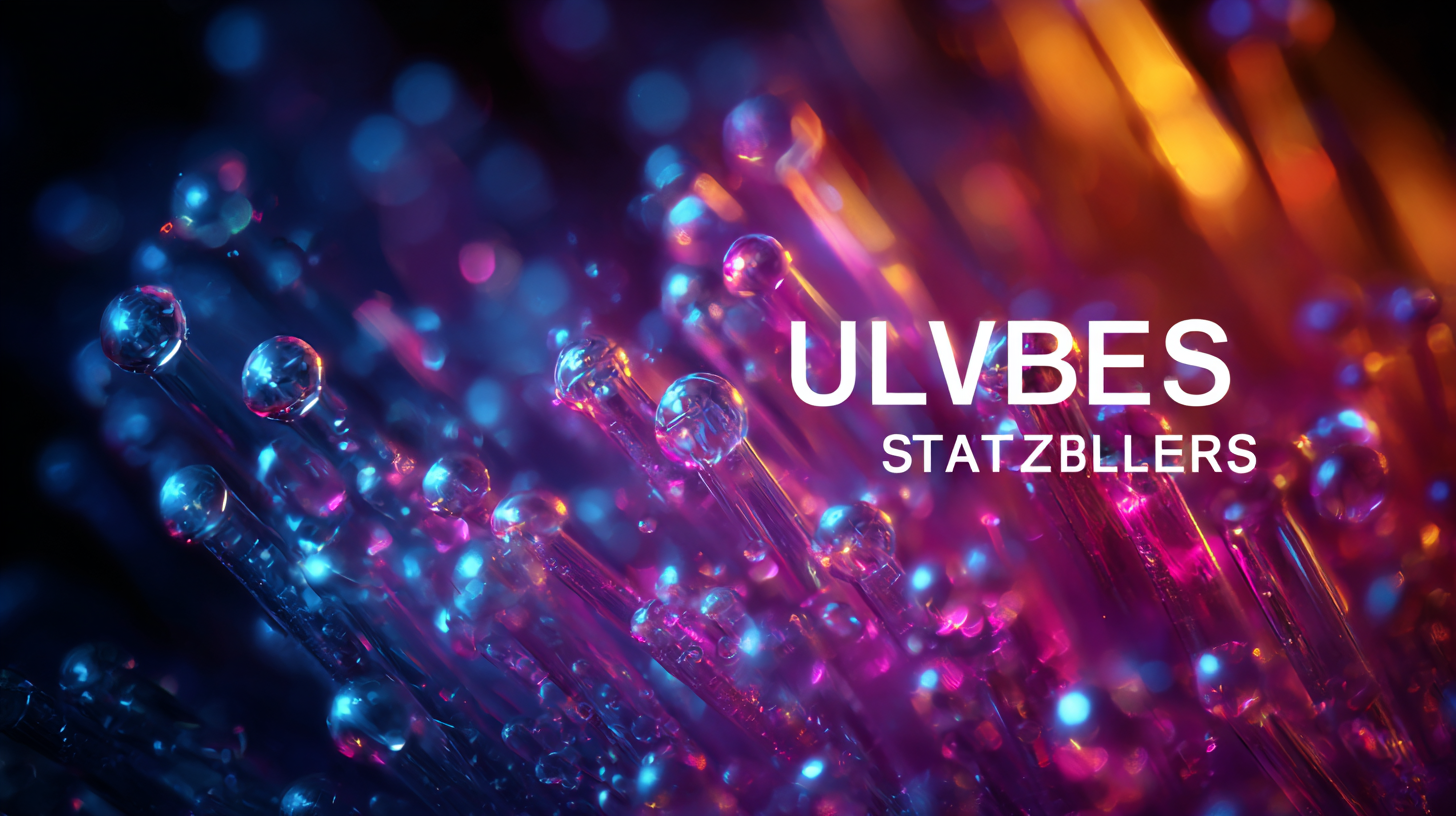
Understanding the Challenges of Choosing the Best UV Stabilizers for PVC Products
Choosing the right UV stabilizers for PVC products is crucial for ensuring durability and performance in various applications. As the demand for PVC increases across industries, understanding the benefits of UV stabilizers becomes more essential in maintaining the integrity of these materials. UV stabilizers protect PVC from harmful ultraviolet radiation, which can lead to degradation, color fading, and loss of mechanical properties over time.

However, the market is saturated with various options, each designed to cater to specific needs and environments, making the selection process challenging. This blog will explore the different types of UV stabilizers for PVC, their unique advantages, and the factors to consider when choosing the best one for your application. By gaining insights into these challenges and benefits, manufacturers and consumers alike can make informed decisions that enhance the longevity and aesthetic appeal of PVC products.
The Importance of UV Stabilizers in Enhancing PVC Product Longevity
The longevity of PVC products is significantly influenced by the presence of UV stabilizers. These additives play a crucial role in protecting PVC from the detrimental effects of ultraviolet radiation, which can lead to degradation, discoloration, and loss of mechanical properties over time. Effective UV stabilizers absorb harmful UV light and convert it into harmless heat, preventing its penetration into the PVC matrix. This not only prolongs the product’s lifespan but also maintains its aesthetic appeal and structural integrity.

When selecting UV stabilizers for PVC applications, it’s essential to consider several factors, including the specific end-use environment and exposure duration. Different stabilizers offer varying degrees of protection, and their effectiveness may depend on the formulation of the PVC itself. Performance, compatibility, and cost-effectiveness are key considerations that manufacturers must navigate to ensure optimal performance of their final products. By understanding these aspects, producers can make informed decisions that enhance the longevity and reliability of their PVC offerings.
Types of UV Stabilizers: Understanding Options and Their Applications
When selecting UV stabilizers for PVC products, understanding the various types and their specific applications is crucial. The market encompasses several categories, including Hindered Amine Light Stabilizers (HALS), UV Absorbers, Quenchers, and more. HALS are particularly favored for their ability to extend the lifespan of plastics by scavenging free radicals that can damage the material. Meanwhile, UV Absorbers function by capturing and dissipating harmful ultraviolet radiation, providing an effective barrier against degradation.
Reports indicate that the global UV stabilizers market is projected to reach approximately $5.8 billion by 2025, with a significant share attributed to HALS due to their widespread use in durable goods. This growth is driven by an increasing demand for long-lasting materials across various industries, including construction, automotive, and consumer goods.
**Tip:** When selecting a UV stabilizer, consider the specific environmental conditions the PVC product will face. For outdoor applications, a combination of HALS and UV Absorbers can offer enhanced protection against both UV exposure and thermal degradation.
In addition to understanding the types of stabilizers, it’s essential to evaluate compatibility with existing formulations. Conducting compatibility tests can prevent issues like phase separation and ensure optimal performance in the final product composition.
Key Challenges in Selecting the Right UV Stabilizers for PVC
Choosing the right UV stabilizers for PVC products is fraught with significant challenges that require careful consideration. One major challenge is the vast array of UV stabilizers available, each with its unique properties and effectiveness. Manufacturers must navigate through options such as HALS (Hindered Amine Light Stabilizers) and UV absorbers, assessing which combination can provide optimal protection against degradation without compromising the material's aesthetics or mechanical properties. The intricacies of these choices can often overwhelm manufacturers who aim to balance performance and cost-effectiveness.
Another critical aspect is the compatibility of UV stabilizers with other additives in PVC formulations. The effectiveness of UV stabilizers can be influenced by the presence of other ingredients, and their interactions may lead to variables in performance, such as color stability and mechanical strength. This complexity necessitates extensive testing and validation processes to ensure that the selected stabilizers do not adversely affect the overall quality of the final PVC product. Ultimately, the right selection hinges on a deep understanding of both the product's end-use environment and the chemical interactions at play.
Understanding the Challenges of Choosing the Best UV Stabilizers for PVC Products
| Challenge | Description | Impact on Selection | Considerations |
|---|---|---|---|
| Compatibility | The UV stabilizer must be compatible with the PVC formulation. | Poor compatibility can lead to reduced performance and product failure. | Evaluate chemical interactions and formulation specifics. |
| Regulatory Compliance | Stabilizers must meet industry regulations and safety standards. | Non-compliance can result in legal issues and market access problems. | Keep updated with relevant regulations and standards. |
| Cost-Effectiveness | Balancing cost while ensuring performance is vital. | High costs can impact the product's marketability. | Analyze total cost versus performance benefits. |
| Effectiveness | The stabilizer should provide adequate UV protection based on the application. | Ineffective stabilizers lead to product degradation. | Conduct tests to ensure performance meets requirements. |
| Availability | Access to consistent supply of stabilizers is crucial. | Supply chain disruptions can impact production schedules. | Establish reliable sources for materials. |
Market Trends and Projections for UV Stabilizers in the PVC Industry by 2025
The demand for UV stabilizers in the PVC industry is projected to grow significantly by 2025, driven by increasing applications across various sectors including construction, automotive, and consumer goods. According to a recent market report by Mordor Intelligence, the global UV stabilizer market is expected to reach approximately $4.5 billion by 2025, reflecting a compound annual growth rate (CAGR) of 5.2% from 2020. This growth is largely attributed to the rising awareness regarding the importance of UV protection in enhancing the durability and lifespan of PVC products.

One of the key trends shaping this market is the shift towards more sustainable and environmentally friendly UV stabilizers. As regulations tighten regarding the use of hazardous materials, manufacturers are increasingly seeking alternatives like non-toxic hindered amine light stabilizers (HALS) and UV absorbers, which are less harmful to both human health and the environment. Additionally, innovations in formulation technology are enabling improved performance characteristics of UV stabilizers, providing better protection against degradation caused by UV radiation, which is crucial for maintaining the quality of outdoor PVC applications. As the industry evolves, understanding these trends will be essential for manufacturers looking to remain competitive in the growing market.
Future Innovations in UV Stabilization Technologies for PVC Products
The field of UV stabilization for PVC products is rapidly evolving, with future innovations promising to enhance performance and sustainability. Currently, traditional UV stabilizers face challenges related to effectiveness and environmental impact. Researchers and manufacturers are now focusing on developing advanced formulations that not only provide superior resistance to UV degradation but also align with eco-friendly practices. Next-generation stabilizers utilizing nanotechnology and bio-based materials are paving the way for improved durability and reduced toxicity.
Tips for choosing the best UV stabilizers include assessing the specific requirements of your PVC application, such as exposure conditions and desired lifespan. Additionally, consider the environmental regulations in your region and opt for stabilizers that meet these guidelines. Collaborating with suppliers who have a track record in innovation can also provide insights into the latest technologies that enhance performance while also being sustainable.
Ongoing research into polymer technologies is crucial, especially for recycling and upcycling plastic waste. By integrating better stabilizers, the industry can improve the lifecycle of PVC products, making them more recyclable while maintaining their functionality. Staying informed about these advancements can significantly benefit manufacturers and end-users alike.

